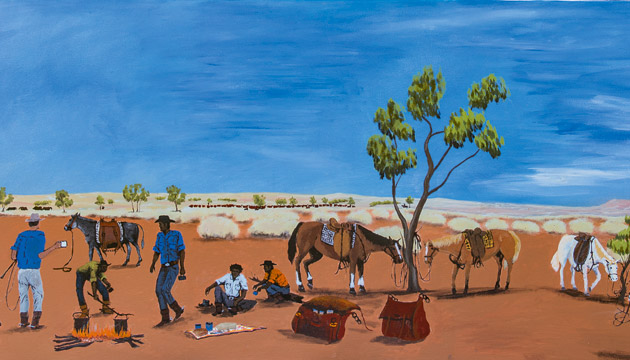Indigenous artists relive their youth working in the cattle industry with lively figurative paintings focused on station life.
Story Therese Hall Painting by Mervyn Street
Mervyn Street has vivid memories of his life as a stockman on Kimberley cattle stations in the 1960s and 1970s. “Every day I’d ride a colt from sun up to sun down,” he says of working on Louisa Downs, located midway between Fitzroy Crossing and Halls Creek, WA. “Working was like a rodeo.” The 68-year-old Gooniyandi man from ‘river country’ near Fitzroy Crossing has been tapping into these memories to create detailed figurative paintings for the past 20 years.
“I love painting cattle and horses and people,” Mervyn says. “It brings back memories of when I did all those things.”
Like many older Indigenous artists from northern and central Australia, Mervyn has fond memories of working on pastoral stations. “I really liked that work – making rope, breaking in horses, cutting the cows and calves out,” he says. According to the manager of Mangkaja Arts Resources Agency, Belinda Cook, many senior Indigenous artists are exploring their station history through their art. “As well as painting canvasses, they paint objects such as saddles and bullock skulls,” she says. But few paint in a naturalistic style like Mervyn – most tell the stories of their station days in the aerial-view dot style associated with the Indigenous desert art movement.
This story excerpt is from Issue #121
Outback Magazine: October/November 2018










